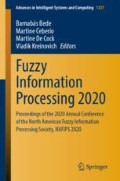Abstract
This paper develops an adaptive interval fuzzy modeling method using participatory learning and interval-valued stream data. The model is a collection of fuzzy functional rules whose structure and parameters evolve simultaneously as data are input. The evolving nature of the method allows continuous model update using stream interval data. The method employs participatory learning to cluster interval input data, assigns to each cluster a fuzzy rule, uses the weighted recursive least squares to update the parameters of the rule consequent intervals, and returns an interval-valued output. The efficacy of the method is evaluated in modeling and forecasting daily low and high prices of the two most traded cryptocurrencies, BitCoin and Ethereum. The forecast performance of the adaptive interval fuzzy modeling method is evaluated against classic autorregressive moving average, exponential smoothing state model, and the naïve random walk. Results indicate that, similarly to with exchange rates, no model outperforms random walk in predicting prices in digital coin markets. However, when a measure of directional accuracy is accounted for, adaptive interval fuzzy modeling outperforms the remaining alternatives.
Access this chapter
Tax calculation will be finalised at checkout
Purchases are for personal use only
Notes
- 1.
Selection done choosing cryptocurrencies with the highest liquidity and market capitalization. Data source: https://coinmarketcap.com/.
References
P. Angelov, D. Filev, An approach to online identification of Takagi–Sugeno fuzzy models. IEEE Trans. Syst. Man Cybern.—Part B 34(1), 484–498 (2004)
J. Arroyo, R. Espínola, C. Maté, Different approaches to forecast interval time series: a comparison in finance. Comput. Econ. 27(2), 169–191 (2011)
L. Billard, E. Diday, Regression analysis for interval-valued data, in (2000), pp. 369–374
K. Burns, I. Moosa, Enhancing the forecasting power of exchange rate models by introducing nonlinearity: does it work? Econ. Model. 50, 27–39 (2015)
S. Corbet, A. Meegan, C. Larkin, B. Lucey, L. Yarovaya, Exploring the dynamic relationships between cryptocurrencies and other financial assets. Econ. Lett. 165, 28–34 (2018)
R. Fagundes, R. De Souza, F. Cysneiros, Interval kernel regression. Neurocomputing 128, 371–388 (2014)
R. Hyndman, A. Koehler, J. Ord, R. Snyder, Forecasting with Exponential Smoothing: The State Space Approach (Springer, Berlin, 2008)
C. Lim, Interval-valued data regression using nonparametric additive models. J. Korean Stat. Soc. 45(3), 358–370 (2016)
E. Lima Neto, F. de Carvalho, Constrained linear regression models for symbolic interval-valued variables. Comput. Stat. Data Anal. 54(2), 333–347 (2010)
L. Ljung, System Identification: Theory for the User (Prentice-Hall, Englewood Cliffs, NJ, 1988)
L. Maciel, F. Gomide, R. Ballini, Evolving possibilistic fuzzy modeling for financial interval time series forecasting, in Processing of the Annual Conference of the North American Fuzzy Information Processing Society (NAFIPS) Held Jointly 5th World Conference on Soft Computing (WConSC) (2015), pp. 1–6
A. Maia, F. de Carvalho, Holt’s exponential smoothing and neural network models for forecasting interval-valued time series. Int. J. Forecast. 27(3), 740–759 (2011)
A. Maia, F. de Carvalho, T. Ludermir, Forecasting models for interval-valued time series. Neurocomputing 71(16–18), 3344–3352 (2008)
R. Moore, R. Kearfott, M. Cloud, Introduction to Interval Analysis (SIAM Press, Philadelphia, 2009)
I. Moosa, K. Burns, The unbeatable random walk in exchange rate forecasting: reality or myth? J. Macroecon. 40, 69–81 (2014)
P. Rodrigues, N. Salish, Modeling and forecasting interval time series with threshold models. Adv. Data Anal. Classification 9(1), 41–57 (2015)
A. Roque, C. Maté, J. Arroyo, A. Sarabia, iMLP: applying multi-layer perceptrons to interval-valued data. Neural Process. Lett. 25(2), 157–169 (2007)
L. Silva, F. Gomide, R. Yager, in Participatory learning in fuzzy clustering. (Reno, Nevada, USA, 2005), pp. 857–861
L. Stefanini, A generalization of hukuhara difference and division for interval and fuzzy arithmetic. Fuzzy Sets Syst. 161, 1564–1584 (2010)
Y. Sun, A. Han, Y. Hong, S. Wang, Threshold autoregressive models for interval-valued time series data. J. Econ. 206, 414–446 (2018)
Y. Sun, X. Zhang, Y. Hong, S. Wang, Asymmetric pass-through of oil prices to gasoline prices with interval time series modelling. Energy Econ. 78, 165–173 (2018)
T. Takagi, M. Sugeno, Fuzzy identification of systems and its applications to modeling and control. IEEE Trans. Syst., Man, Cybern. SMC–15(1), 116–132 (1985)
X. Tao, C. Li, Y. Bao, Z. Hu, Z. Lu, A combination method for interval forecasting of agricultural commodity futures prices. Knowl.-Based Syst. 77, 92–102 (2015)
X. Wang, S. Li, The interval autoregressive time series model, in (2011), pp. 2528–2533
F. Wojciech, J. Salmeron, Evolutionary learning of fuzzy grey cognitive maps for the forecasting of multivariate, interval-valued time series. Int. J. Approx. Reason. 55, 1319–1335 (2014)
T. Xiong, Y. Bao, Z. Hu, Multiple-output support vector regression with a firefly algorithm for interval-valued stock price index forecasting. Knowl.-Based Syst. 55, 87–100 (2014)
Acknowledgements
The authors are grateful to the Brazilian National Council for Scientific and Technological Development (CNPq) for grants 302467/2019-0 and 304274/2019-4, and the São Paulo Research Foundation (Fapesp) for their support
Author information
Authors and Affiliations
Corresponding author
Editor information
Editors and Affiliations
Rights and permissions
Copyright information
© 2022 The Author(s), under exclusive license to Springer Nature Switzerland AG
About this paper
Cite this paper
Maciel, L., Ballini, R., Gomide, F. (2022). Adaptive Interval Fuzzy Modeling from Stream Data and Application in Cryptocurrencies Forecasting. In: Bede, B., Ceberio, M., De Cock, M., Kreinovich, V. (eds) Fuzzy Information Processing 2020. NAFIPS 2020. Advances in Intelligent Systems and Computing, vol 1337. Springer, Cham. https://doi.org/10.1007/978-3-030-81561-5_7
Download citation
DOI: https://doi.org/10.1007/978-3-030-81561-5_7
Published:
Publisher Name: Springer, Cham
Print ISBN: 978-3-030-81560-8
Online ISBN: 978-3-030-81561-5
eBook Packages: Intelligent Technologies and RoboticsIntelligent Technologies and Robotics (R0)

